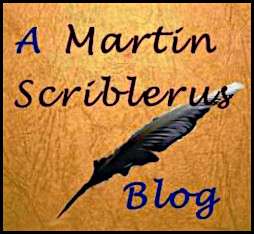There was a moment of delight in discovering the entry for the village in the 1914 edition of Kelly’s Directory. The village life described had all but disappeared by the time of my childhood in the 1960s, but the family names survived. Only a few of the names now remain.
HIGH and LOW or NETHER HAM form a parish, 3 miles north from Langport West station on the Durston and Yeovil branch of the Great Western railway, and 3 miles north from Langport East station on the Castle Cary and Durston rail motor car service of the same line, and 5 west from Somerton, in the Eastern division of the county, Whitley hundred, Somerton and Langport petty sessional division, Langport union and county court district, rural deanery of Ilchester, archdeaconry of Wells and diocese of Bath and Wells.
The church of St. Andrew, originally erected by John Selwyn, abbot of Glastonbury in 1476, is a building of stone in the Perpendicular style, containing a chancel, nave, aisles, south porch and an embattled western tower, with pinnacles, containing a clock placed in 1894 and 5 bells: the tower is much older than the rest of the building: there are several gargoyles round the church and tower, and on the latter is a Amin statue of the Virgin and Child in good preservation: the rood screen, remarkable for its beauty, was brought from Glastonbury abbey: there is a brass to John Dyer, who built the chancel, dated 1499: the stained east window is a memorial to John Dobin of Aller, and there are others to Francis Gillett, late churchwarden, and his son : the font is Norman and the pulpit is of stone: the church was restored in 187o and affords 35o sittings. The register dates from the year 1569, and contains many curious notes in Latin. There is also preserved here a description of the parish in Latin, made by Adrian Schael, who was rector of the parish in the reign of Elisabeth. The living is a rectory, net yearly value £424, including 18o acres of glebe, with residence, in the gift of Worcester College, Oxford, and held since 1910 by the Rev. Reginald Beviss Thompson M.A. of that college.
There is a United Methodist chapel at High Ham, a Congregational chapel at Low Ham, erected in 186o, with 100 sittings, and another at Henley, built in 1841, seating 8o persons. The old school-house is the property of the parish; on the wall is an inscription, dated 1598.
At Nether Ham is a chapel dating from about 1650, standing on a site of a much more ancient structure; it contains effigies of Sir Edward Hext, knighted at Whitehall, 12 May, 16o4, and his wife; and also a monument to Lord Stawell, with a Latin inscription : there are 120 sittings. The living is a private chaplaincy of the lady of the manor, net yearly value £50, in the gift of Mrs Williamson, and held since 1904 by the Rev. David Melville Ross M.A. of Jesus College, Oxford, who is also vicar of and resides at Langport.
The charities, which are of small yearly value, include an endowment left by Adrian Schael to found a school.
Roger Marriatt-Dodington esq. of Bishops Lydeard, is lord of the manor of High Ham, and Mrs. Williamson is lady of the manor of Low or Nether Ham.
The soil is stone brash and clay; and the sub-soil is blue and white lias. The chief crops are wheat, beans, barley and apples. There are orchards in this parish producing large quantities of cider. The area is 5,o1o acres of land and 7 of water; rateable value, £6,956; the population of the civil parish in 1911 was 958, including 7 officers and 82 inmates of Langport Union House, and of the ecclesiastical parish, 932.
By Local Government Board Order 17.645, March 25, 1886, parts of King’s Sedgemoor were amalgamated with High Ham from Long Sutton and Huish Episcopi parishes.
NETHER HAM is a tithing of Champton hundred, Wilton Free Manors.
The villages of Henley, 1½ miles north, Picts Hill, 2 south, Beer, 4 north-west, and Stout, t south-east, are in this parish.
Parish Clerk, Adolphus Gooding.
Post, M.O. & T. Office, High ham.–Mrs. Elisabeth Mears, sub-postmistress. Letters through Langport. Delivery commences at 8 a.m. & 5.15 p.m.; dispatched at 8.15 a.m. & 6.5 p.m.; Sundays, 8 a.m Wall Letter Boxes.—Low Ham, cleared at 6.45 a.m. & 6.3o p.m.; Sundays, 6.45 a.m.; Henley, 4.50 p.m. week days only; Low Ham North, 6.55 a.m. & 6.2o p.m.; Sundays, 6.55 a.m
Police Station, Alfred Hook, constable
Ham Down House, or the Langport Union House, is a hexagonal building of white lias, erected at a cost of £3,500, & available for 15o inmates; Rev. Joseph Stubbs M.A. chaplain; James P. Johnstone L.R.C.P., L.E.C.S. & L.M. Edin. medical officer; Richard Cavendish, master; Mrs. Cavendish, matron
Publics Elementary School (mixed), built, with master’s house, in 1805, for 150 children; average attendance, 109; Charles Mathams, master
HIGH HAM.
Private Residents
Ballot Hugh Hale Leigh D.C.L
Carne-Hill Mrs. Ham court
Dobin Charles
Dobin Misses, Southend house
Frith Misses, The Cottage
Kelway James, Wearne Inch,
Lavis George
Newcombe Jas. Kivelle, Primrose cot
Nutt George, Compton house
Phillips Miss, Highlands
Rowsell Thomas William Thompson
Rev. Reginald Beviss M.A. (rector), Rectory
COMMERCIAL.
Barnard Edward Clement, farmer, Longstreet farm
Bartlett Ethelbert, farmer, Henley
Cox John, farmer, Howes farm
Crossman Luther Andrew George, atone mason
England George, beer retailer
Fisher Bertie, thatcher
Ford Alfred Thos. cowkeeper,
Henley Gooding Adolphus, boot maker & parish clerk
Gooding Winfred Jn. farmer, Henley
Gould Edward, King’s Head inn
Gould Mary (Mrs.), baker
Hodges Edward James, grocer
Keirle Wilfred China, farmer, Henley
Levis Albert Edward, wheelwright
Levis Francis William, carpenter
Lawrence William, farmer, Beer
Lloyd Fredk. Edgar, farmer, Henley
Lloyd George, farmer, Decoy farm
Luxton Albert, farmer, Henley
Bailey Jesse Meade, farmer, Beer
Mears Elizabeth (Mrs.), draper, grocer & sub-postmistress
Mid-Somerset Golf Club (Capt. G. 5. Phipps Hornby, Hon. sec)
Oram Herbert, farmer, Redfield
Perrin John, carpenter
Petty Joseph. shopkeeper, Henley
Priddle Walter John, boot maker
Reynolds William, farmer
Richards Francis, frmr. Hillside farm
Sherrin Adam Vile, frmr. Manor frm
Sherrin Fdk. Geo. butcher & farmer
Tapscott Alfred, farmer, Henley
Tapscott Edward, farmer, Henley
Thyer Edwin, farmer, Townsend frm
Thyer Robert, farmer
Travis George, farmer, Henley
Vigar Henry, farmer, Henley
Wilkins William Dewdney, farmer. Whitehouse farm. Henley
Williams Frank, farmer, Beer
Woodman Chas. market grdnr, Henley
LOW HAM.
Barnard Mrs. Morton house
Bryant Winfred
Hoskins Hugh, Cluny house
Lugg Miss
COMMERCIAL
Clark Hy. farmer, Dairy House farm
Cook John, farmer, Old Manor farm
Fouracre William, cycle agt. Picts hl
Hill Francis John, farmer
Hoare Sophie (Mrs.). Laundry, Picts hl
Hurd Charles, farmer
Keevil Bros. farmrs. New Manor frm
Lloyd Emma Jane (Mrs.), farmer, Fir Tree farm
Mead Robert Uttermare, insurance agent, Inglenook
Oram Emily (Mrs.), cowkeeper
Oram Luther, boot maker
Salway George, haulier, Picts hl
Sherrell George Jas. Congregational evangelist
Sherrin Jane (Mrs.), farmer
Skeat Frederick Oeorge, farmer
Small Lucy Louisa (bliss), farmer
Thresher Charles, farmer, Ham down
Wallis Jsph. farmer Brambwells farm
Windsor Jsph. Geo. frmr. Perren’s fm



